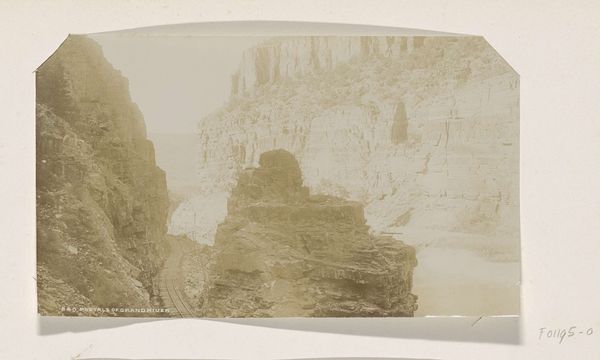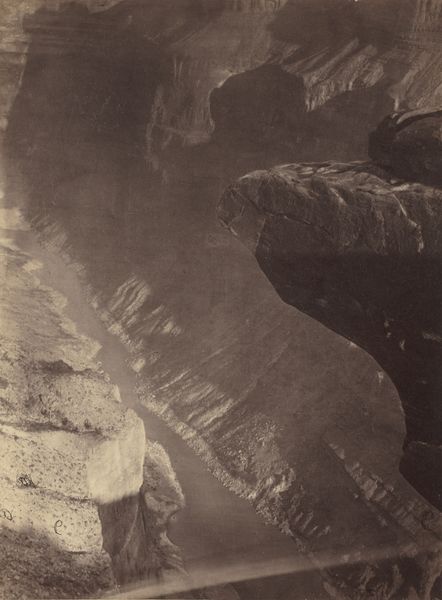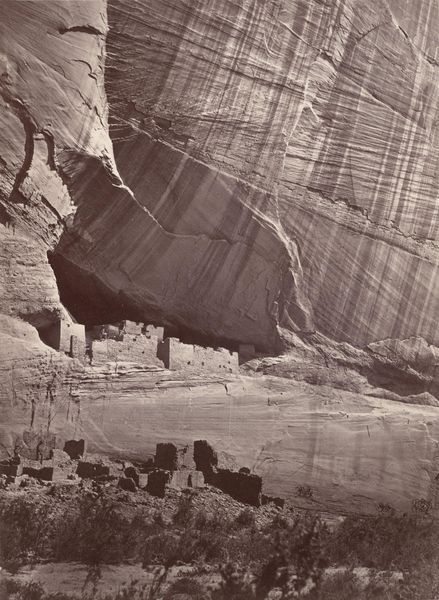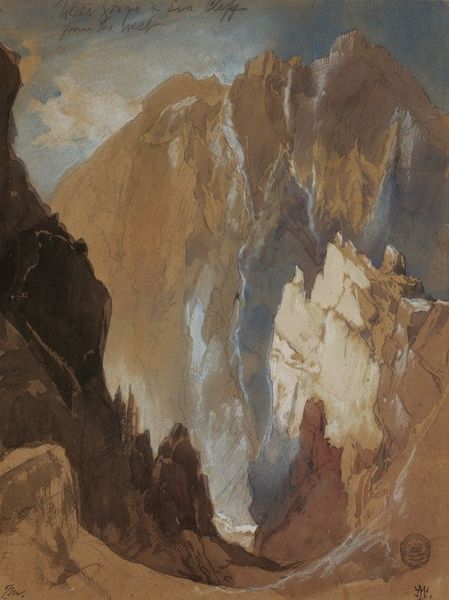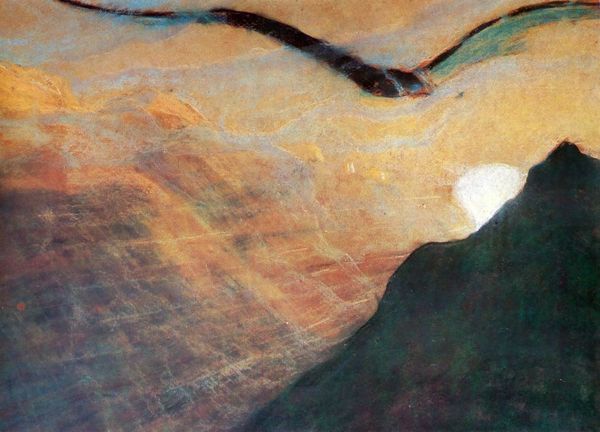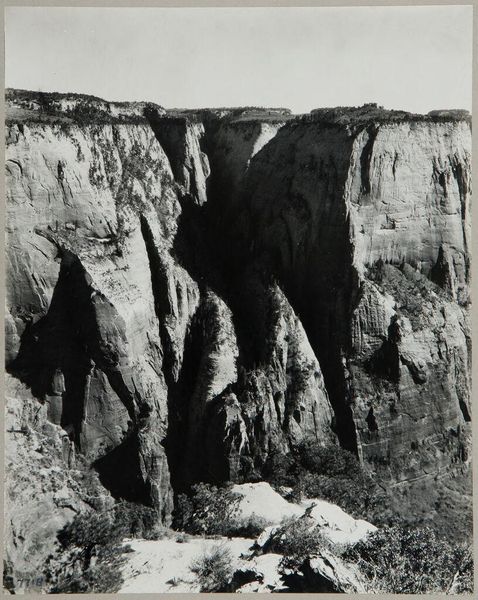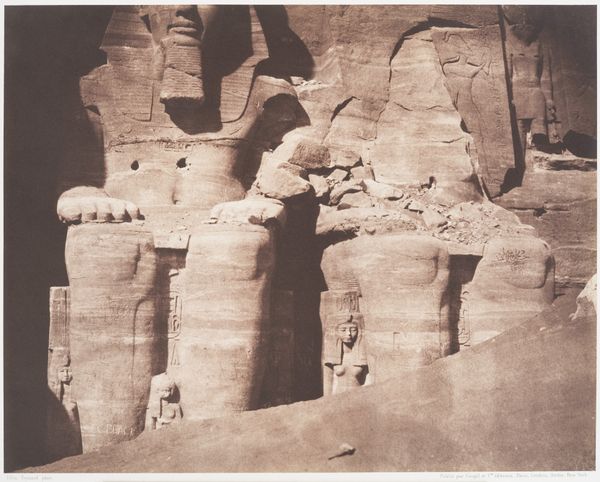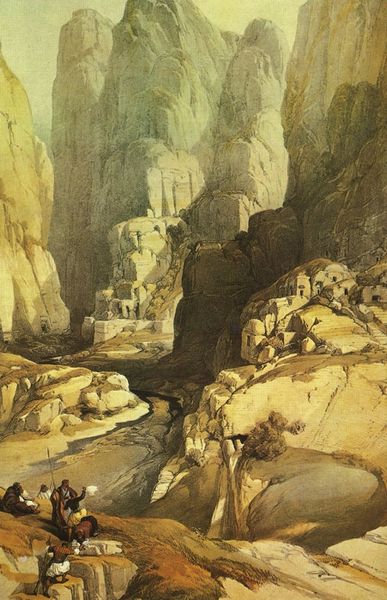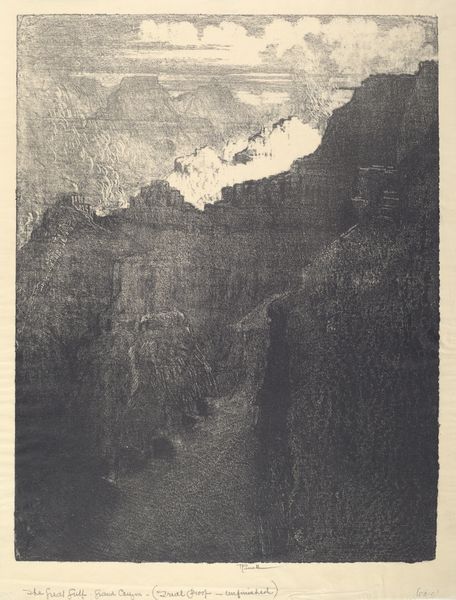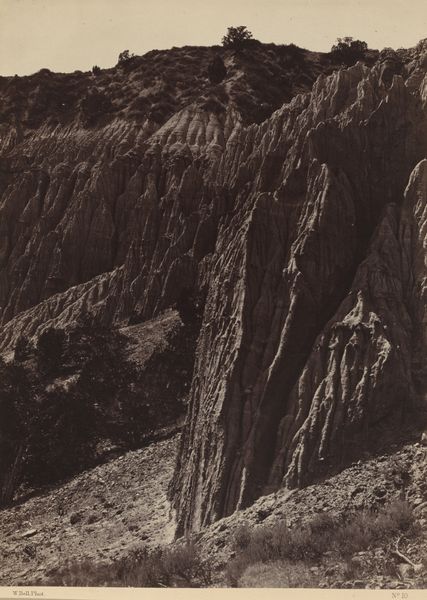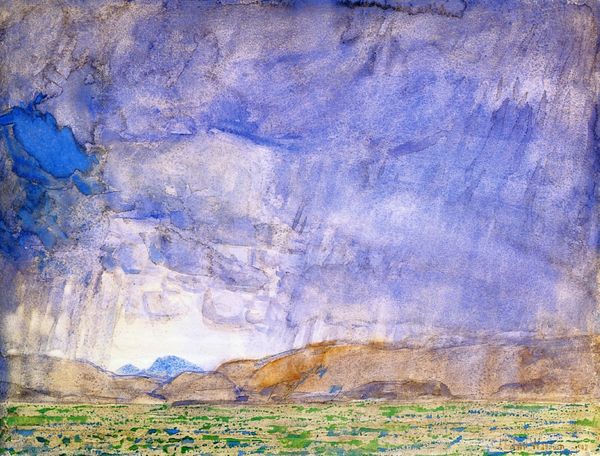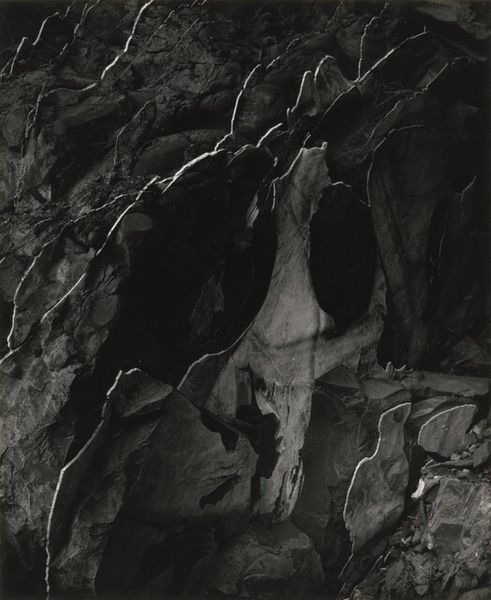
drawing, pencil, charcoal
#
drawing
#
landscape
#
charcoal drawing
#
rock
#
romanticism
#
pencil
#
charcoal
#
charcoal
Copyright: Public domain
Caspar David Friedrich made this sepia drawing of a rock arch in the Uttewalder Grund. Friedrich lived during a time of great political upheaval in Europe. As a Romantic artist working in early 19th century Germany, his art reflects a turn away from the Enlightenment’s emphasis on reason toward emotion, intuition, and the power of nature. Note how the arch, a natural formation, frames the tiny human figures in the distance. We can see the appeal of untamed nature as a refuge from social and political problems. Romanticism was not only a revolt against the aesthetic values of the art academies; it was also linked to new nationalist ideas. The celebration of the local landscape became a way of forging a sense of shared identity and belonging. Art historians consult exhibition reviews, artists' biographies, and historical documents to build a more comprehensive understanding of artworks like this one.
Comments
No comments
Be the first to comment and join the conversation on the ultimate creative platform.
